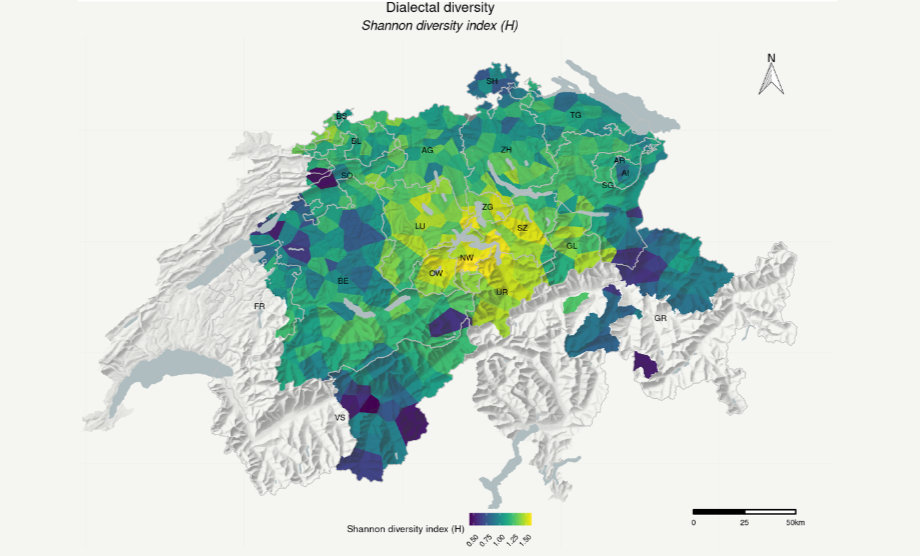New Publication
Linguistic traits as heritable units? Spatial Bayesian clustering reveals Swiss German dialect regions
Journal of Linguistic Geography

Noemi Romano, Peter Ranacher, Sandro Bachmann and Stéphane Joost
Abstract
In the early 2000s, the SADS, an extensive linguistic atlas project, surveyed more than three thousand individuals across German-speaking Switzerland on over two hundred linguistic variants, capturing the morphosyntactic variation in Swiss German. In this paper, we applied TESS, a Bayesian clustering method from evolutionary biology to the SADS to infer population structure, building on parallels between biology and linguistics that have recently been illustrated theoretically and explored experimentally. We tested three clustering models with different spatial assumptions: a nonspatial model, a spatial trend model with a spatial gradient, and a spatial full-trend model with both a spatial gradient and spatial-autocorrelation. Results reveal five distinct morphosyntactic populations, four of which correspond to traditional Swiss German dialect regions and one of which corresponds to a base population. Moreover, the spatial trend model outperforms the nonspatial model, suggesting a gradual transition of morphosyntax and supporting the idea of a Swiss German dialect continuum.
https://www.doi.org/10.1017/jlg.2021.12